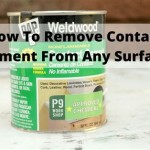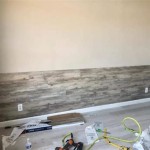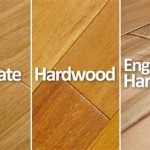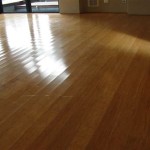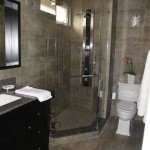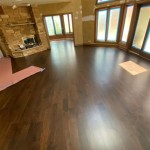How To Fix Laminate Floors: A Comprehensive Guide
Laminate flooring offers a cost-effective and aesthetically pleasing alternative to hardwood, mimicking the look of natural materials while providing durability and ease of maintenance. However, like any flooring material, laminate is susceptible to damage over time. Dents, scratches, chips, and water damage are common issues that can detract from the floor's appearance and potentially compromise its structural integrity. This article provides a detailed guide on how to address various types of damage to laminate floors, outlining the necessary tools, materials, and techniques to restore the floor to its original condition.
Before commencing any repair, it is crucial to accurately identify the type and extent of the damage. Surface scratches are often superficial and easily remedied, while deeper gouges or water damage may require more extensive repairs, possibly involving plank replacement. Proper assessment will dictate the appropriate repair strategy and prevent further complications.
Addressing Minor Scratches and Scuffs
The most common issue with laminate flooring is the appearance of minor scratches and scuffs. These imperfections can arise from foot traffic, moving furniture, or pet activity. Fortunately, resolving these blemishes is typically a straightforward process.
Materials Required:
- Laminate floor repair kit (includes color-matched putty or filler)
- Soft cloths
- Cleaning solution suitable for laminate floors
- Wax crayon or touch-up pen (matching the floor color)
Procedure:
1.
Cleaning the Area:
Begin by thoroughly cleaning the affected area with a laminate-safe cleaning solution. This removes any dirt, debris, or surface contaminants that could interfere with the repair process. Ensure the area is completely dry before proceeding.2.
Applying Repair Putty or Filler:
If the scratch is slightly deeper than a surface scuff, utilize the color-matched putty or filler from the laminate repair kit. Apply a small amount of the filler to the scratch, ensuring it fills the entire groove. Use a plastic spatula or putty knife to smooth the filler evenly with the surrounding surface. Avoid applying excessive pressure, which could damage the surrounding laminate.3.
Removing Excess Filler:
Allow the filler to dry completely according to the manufacturer's instructions. Once dry, carefully sand away any excess filler using fine-grit sandpaper (typically 220-grit or higher). Use gentle, circular motions to blend the repaired area seamlessly with the surrounding floor. Be careful not to scratch the surrounding laminate during this process.4.
Using a Wax Crayon or Touch-Up Pen:
For very minor scratches or scuffs, a wax crayon or touch-up pen specifically designed for laminate floors can be used. Choose a color that closely matches the floor's finish. Apply the crayon or pen directly to the scratch, following the manufacturer's instructions. Wipe away any excess with a clean, soft cloth.5.
Buffing the Repaired Area:
After applying the filler, crayon, or pen, buff the repaired area with a clean, soft cloth. This will help to blend the repaired area with the surrounding floor and restore its original sheen.Repairing Chips and Deeper Gouges
Chips and deeper gouges require a more involved repair process compared to minor scratches. These types of damage can expose the core layer of the laminate, making it susceptible to moisture and further damage. Early intervention is crucial to prevent the problem from escalating.
Materials Required:
- Laminate floor repair kit (includes hard filler and a heat applicator)
- Cleaning solution suitable for laminate floors
- Putty knife or small spatula
- Fine-grit sandpaper (220-grit or higher)
- Color-matched sealant (optional)
Procedure:
1.
Cleaning the Damaged Area:
Thoroughly clean the damaged area, removing any loose debris or dirt. Ensure the area is completely dry before proceeding. A vacuum cleaner with a brush attachment can be helpful for removing small particles from the gouge.2.
Applying Hard Filler:
Most laminate repair kits for chips and gouges include a hard filler material that requires heating for application. Carefully follow the manufacturer's instructions for heating the filler. Typically, this involves using a small heat applicator or soldering iron-like tool to melt the filler. Apply the melted filler to the chip or gouge, ensuring it completely fills the void. Overfill slightly to allow for sanding later.3.
Allowing the Filler to Cool and Harden:
Allow the filler to cool and harden completely. This may take several minutes, depending on the type of filler used. Avoid touching or disturbing the filler while it is cooling.4.
Sanding the Repaired Area:
Once the filler is completely hard, carefully sand away any excess filler using fine-grit sandpaper. Use gentle, circular motions to blend the repaired area seamlessly with the surrounding floor. Be careful not to scratch the surrounding laminate during this process. Start with a slightly coarser grit sandpaper if necessary, but always finish with fine-grit sandpaper to achieve a smooth finish.5.
Applying Sealant (Optional):
If the repaired area is in a high-traffic zone or prone to moisture exposure, consider applying a color-matched sealant to provide additional protection. Follow the manufacturer's instructions for applying the sealant.Addressing Water Damage and Replacing Planks
Water damage is a serious issue for laminate flooring. Laminate is not waterproof, and prolonged exposure to moisture can cause the core layer to swell, warp, or delaminate. In cases of significant water damage, the affected planks may need to be replaced. Identifying the source of the water leak is paramount before undertaking any repair; otherwise, the problem will recur.
Materials Required:
- Replacement laminate planks (matching the existing floor)
- Tapping block
- Pull bar
- Hammer
- Measuring tape
- Pencil
- Utility knife or saw
- Moisture meter (optional, but recommended)
- Safety glasses
- Knee pads
Procedure:
1.
Identifying and Addressing the Water Source:
Before replacing any planks, locate and repair the source of the water leak. This could be a leaky pipe, a faulty appliance, or inadequate weatherproofing. Ignoring the source of the leak will result in recurring damage.2.
Removing Damaged Planks:
Removing damaged laminate planks depends on the type of installation (click-lock or glue-down). For click-lock floors, use a pull bar and tapping block to carefully detach the damaged plank from the surrounding planks. Start by removing the baseboards around the affected area to provide access to the edges of the planks. If the plank is significantly swollen, it may be necessary to cut it into smaller pieces using a utility knife or saw to facilitate removal. For glue-down floors, softening the adhesive with a heat gun or solvent may be necessary before carefully prying up the damaged plank. This process can be more challenging and may require professional assistance.3.
Preparing the Subfloor:
Once the damaged plank has been removed, thoroughly inspect the subfloor for any signs of moisture damage. If the subfloor is wet or damaged, allow it to dry completely before proceeding. A moisture meter can be used to verify that the subfloor is dry. If necessary, repair or replace the damaged sections of the subfloor.4.
Installing the Replacement Plank:
Carefully measure and cut the replacement plank to the correct size and shape. For click-lock floors, align the replacement plank with the surrounding planks and use a tapping block and hammer to gently lock it into place. Ensure that the seams are tight and flush. For glue-down floors, apply adhesive to the back of the replacement plank and carefully position it in place. Use a roller or heavy weight to apply pressure to the plank and ensure proper adhesion.5.
Replacing Baseboards:
Once the replacement plank has been installed, reattach the baseboards around the affected area. Ensure the baseboards are securely fastened and that there are no gaps between the baseboards and the floor.Properly maintaining laminate floors through regular cleaning and preventative measures can significantly reduce the likelihood of damage. Using furniture pads, area rugs, and avoiding excessive moisture exposure will prolong the life and beauty of the floor.

How To Repair Laminate Flooring The Home

How To Fix A De Laminated Board Without Removing The

How To Repair Laminate Flooring The Home

Laminate Repair How To Perfectly Damage New

How To Fix Scratches On Laminate Flooring Directflooring Direct

How To Repair Laminate Flooring The Home

Patch Gaps In Laminate Floors Madness Method

3 Ways To Repair Laminate Flooring Wikihow

Fixing Creaky Laminate Floors Floor Fix Pro

Easy Diy Fix For Chipped Laminate Or Lvp Flooring
See Also
